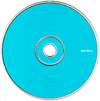|
Aero-Mic'd:
The ambiguous world of Wayne Smith
By Cheryl Meeker
Who hasn't fantasized about playing in a
band or recording in a studio, wearing headphones and emoting
into the microphone? Visual artists have often made this dream
a reality. Perhaps artists' daily practice of economically non-viable
activities gives them greater license to venture off the beaten
track. Arnold Schoenberg, the Talking Heads, John Lennon, Yoko
Ono, Nam June Paik, Romeo Void, Pink Section, Basquiat, Sonic
Youth, Brian Eno, David Bowie, John Cage, Patti Smith, Captain
Beefheart, and Erik Satie are just a few who have moved between
visual art and music. I've played flute and guitar, was forced
to take piano lessons, but now just love playing bass in my living
room to tapes and CDs. I'm still looking for that perfect band
collaboration. What has inspired the latest wave of San Francisco
artists to produce CDs and what are they like? To begin my inquiry
into this phenomenon, I looked at the work of Wayne Smith.
Smith's visual artwork, recently on view in an engaging solo show
at Gallery
16, makes hay with the scanner, creating large, lush Iris
prints so textured you wouldn't believe they are actually flat.
The colors are warm – very Fall season. Yet the subtle references
to fashion and design paradoxically add depth to the interest
Smith seems to find in taking on painting as a calling inherited
from our abstract expressionist forebears. Of course, Smith's
new iris prints are all digital, painted without a brush or a
tube of paint.
Smith's new recording project, Aero-Mic'd,
fuses turntable aesthetics and musique concrete with
the studio tradition of ambient music. In terms of process, Smith's
eponymously named CD is a product of the studio, like the visual
art he makes. He likes recording ambient sound, often capturing
action on his street or while travelling, then layering it to
reflect real life experience rather than carefully crafted performance.
Smith seems for the moment to prefer the populist realm of music
to the elitism of visual art. He points out that anyone can go
down to Aquarius
and pick up a CD. His observation led me to mentally contrast
this cultural form with the exclusive nature of art ownership.
How many people can afford to own artworks? In San Francisco,
how many can afford to make them? Does this create a barrier between
artist and audience? Smith and other visual artists are freeing
themselves of art market baggage to work directly in other disciplines
to explore some of the same issues, but in a new medium. But while
visual art doesn't seem particularly exciting to Smith at the
moment, the music world is. Lots of his friends are working with
music, and everyone seems to be working on CDs. This confluence
of energy and cultural absorption leads to more work, better work,
and more fun in general.
 |
Smith's day job as a graphic designer has given him a sensitive
approach to representing the recordings through the packaging.
His CD cover evokes perfectly the transience of moment and lightness
of touch embodied in the recording itself, resembling his visual
art only insofar as it approaches the work in a way that is not
obvious. Smith seldom goes for the direct approach.
In listening to the
first track, Deadbeat Dads, I first wonder — is my
CD player humming? Unidentifiable background white noise seems
to be the major component throughout much of this work rather
than musically apprehensible and commercially viable track rotations
packaged by the mainstream music industry. Sequenced drums (reminiscent
of the band Ministry) hammer like machine guns, but are muffled
by white noise and a sound like the static of a malfunctioning
CD player.
In the track entitled Justice Inhaler, filtered drums &
bass alternate with the sound of someone trying to tune a short
wave radio. Fun, playful elements collide with deep, real life-type
scenarios; a woman's concerned voice discussing her suffering
from asthma and a later mention of rat poison highlight an imperative
to live in the moment rather than mock it. A Flat Tax is
a cover version of a familiar tune from my high school years done
in sweet, synthesized strings that make it altogether new. What
is that tune? In Broken Nosegay the energetic strumming
of an acoustic guitar binds charming and punk together and somehow
references the tradition of a player who plays first and learns
later.
Blue on Beltane consists of space static, Wagnerian in
its proportions, and a fragment of dialog. Whose familiar voice
is speaking? "Red chiffon dress, her name was Cybill Shepard"…
as in Remembrance of Things Past, mid-life Proustian elements
coalesce…the sound of cards shuffling – or is it a cable
being shifted at the input plug?
On Cold Dust,
sleigh bells and temple bells become cymbals drummed fast with
soft mallets, then suddenly: quietude. Are we in the country or
in a suburb? Real sounds, indistinct and unidentifiable: a radio
in the distance? A distant bell tolls. Lapping waves? Dust
in the Wind on the radio, and the sound of traffic on a far
off ribbon of road?
The inarticulate, suggestible associations that drive Smith's
sound create similar sensations to those we have when looking
at any good work of visual art. Leaving most unsaid, we are allowed,
even encouraged, to ask questions . No pandering to didacticism
here. Live with ambiguity. With Aero-Mic'd, Wayne Smith does.
|

